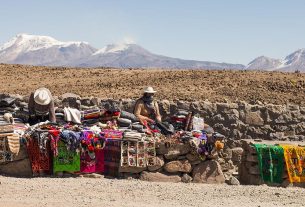I’m always intrigued when I see people living so close to danger, like on hillsides, places with a very high frequency of earthquakes or tsunami risk. I understand that, often, living like this is more a matter of a lack of options. Anyway, nothing surprises me more than finding people living close to an active volcano.
In Ecuador, it’s even a little difficult to escape this. One in three Ecuadorians lives near a volcano. It has more than 60 volcanic cavities spread across the national territory, which is a little larger than the state of São Paulo and smaller than Minas Gerais, to give you an idea. Eleven of these volcanoes are active. Some have been dormant for a long time, and tourist complexes have been created around them. It’s really beautiful to see these geological formations up close that don’t exist in Brazil.
Read too: What to do in Quito, itinerary around the capital of Ecuador
Where to stay in Quito: our accommodation tips
But I always approach it with a little fear. Nature will surprise you, right?
During my stay in Ecuador in February, I was able to see some of the country’s most interesting volcanoes up close and from afar. And, with the help of a local tour guide, Juan, I selected the ones that are most worth the visit.
We visited Quito at the invitation of Gol, which in December 2018 opened a direct flight route from São Paulo to there. There are three weekly flights in each direction: they leave every Tuesday, Thursday and Sunday, at 7:25 pm, from the capital of São Paulo. The Quito – São Paulo section runs every Monday, Wednesday and Friday, leaving at 00:20.
1. Cotopaxi
Por Pavel Svoboda Photography / Shutterstock
There are so many volcanoes in Ecuador that they got their own street. It is the Avenue of Volcanoes, a line that stretches 400 km across the Andes Mountains and passes eight active volcanoes. One of them is Cotopaxi.
Its symmetrical, snow-covered silhouette is one of the country’s symbols. Cotopaxi is 5897 meters high and is one of the highest active volcanoes in the world. It is about 50 km from Quito, but you can see it from the capital, depending on where you are.
The last major eruption of Cotopaxi was in 1877, but every time it moves, it emits smoke that leaves everyone on alert. After all, the city of Latacunga, which is 25 km away, has already been destroyed twice by neighboring lava.
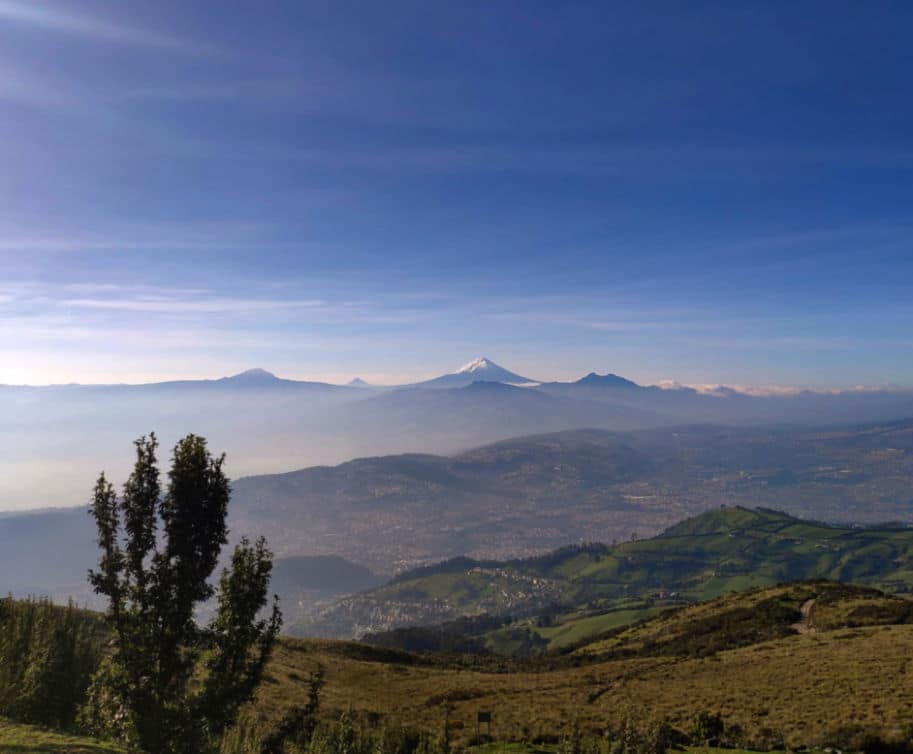
Strong people can take a tour and climb trails to the summit of the volcano. You need to book a specific tour, be physically fit and wear appropriate clothing. Those who are less strong can enjoy the Cotopaxi National Park, where you can visit a lagoon and go horse riding at the foot of the mountain. Those without time or the lazy, a group of which I include myself, can be content with seeing the most dangerous ice giant in Ecuador from afar (photo above).
2. Chimborazo
Did you think the height of the Cotopaxi was small? Chimborazo is bigger. At 6310 meters high, it was once considered the highest point in the world. If we think about the distance between the summit and the center of the earth, it is “higher” than Everest, because the flat shape of the planet means that the surface is a little further from the core at the Equator.
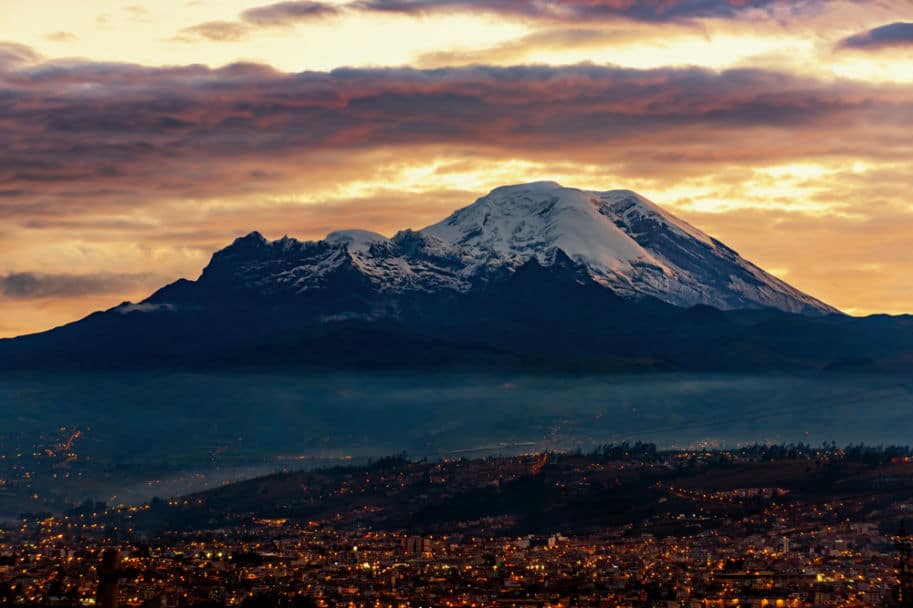
Por Santiago Salinas / Shutterstock
There is no risk of an eruption – the volcano is extinct. But there are other obstacles along the way. The climb is cold and difficult, with several crevasses, risks of avalanches and other challenges that are only for those who are trained.
Anyone who wants to climb can access the volcano through the cities of Riobamba or Ambato. All the guides warn: to get up there, you have to leave home early in the morning. And there is still the risk of having a cloudy day, which can ruin the experience a little.
But don’t be discouraged by the words of a blogger who has no experience with mountaineering. Chimborazo is an incomparable colossus, and deserves your full attention.
3. Let’s start
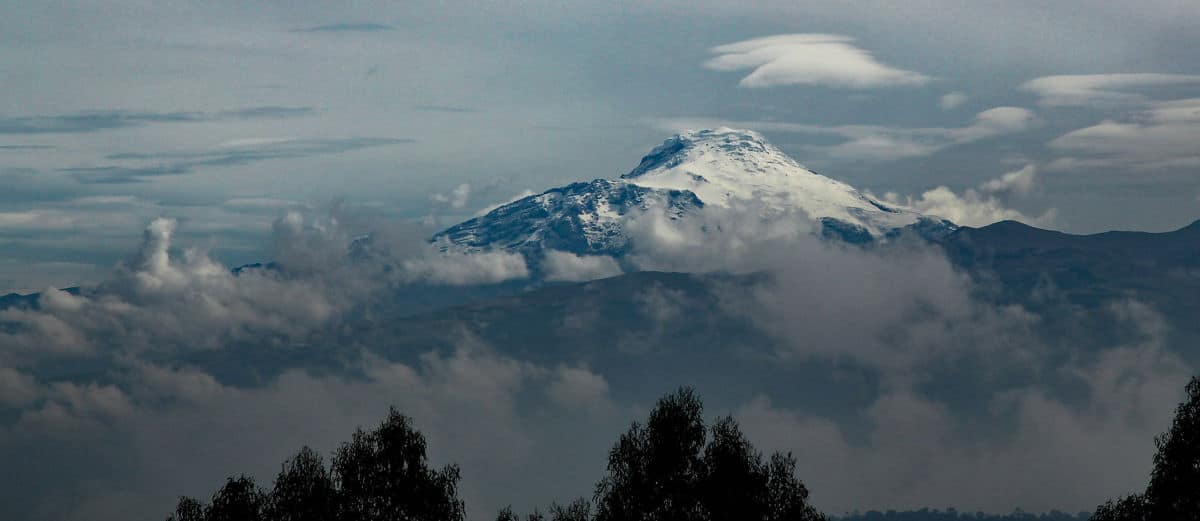
By David Ceballos / Flickr
Cayambe doesn’t always appear on lists of Ecuador’s coolest volcanoes. But it appeared in Juan’s top 5, our guide, and who am I to argue, right? Compared to Chimborazo and Cotopaxi, its silhouette is a bit boring. It’s not a perfect cone and is more like a camel’s hump. But climbing it is not the easiest thing in the world, because of the storms and avalanches.
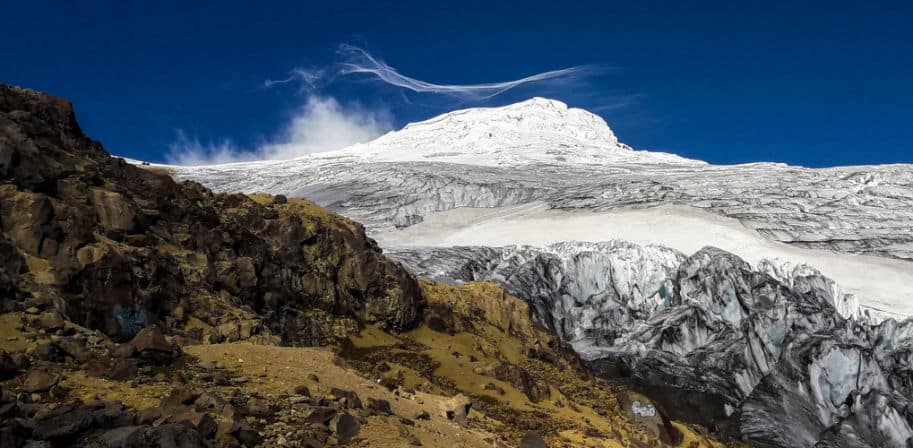
Hermoso Glacier, Cayambe, 5790 meters. David Ceballos / Flickr
But there are still features that make it more interesting. Located just over 70 km from Quito, Cayambe is right on the Equator, in the middle of an ecological reserve full of endemic species, animals and plants. There are also archaeological sites where you can visit pre-Inca temples. And the city of Otavalo is quite close.
know more: Half of the World, the park crossed by the Equator
The indigenous market of Otavalo
4. Antisense
Another really cool snowy giant is Antisana, one of the closest volcanoes to Quito. Only 50 km separates the capital of Ecuador from the mountain. On the way, you pass through the wonderful paramos, open spaces typical of the Andean region. There are many landscapes to fill your eyes and camera memory cards.
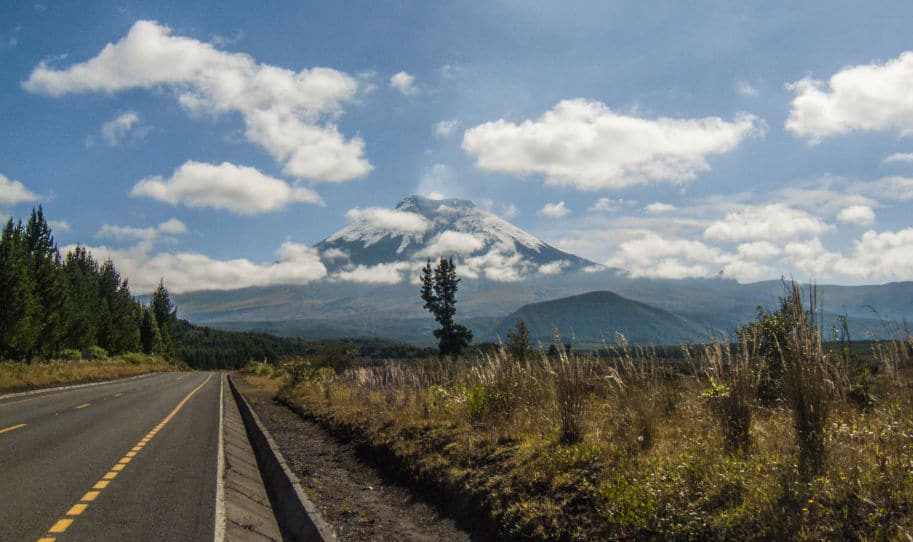
By David Ceballos / Flickr
Antisana was formed by two volcanoes, one ended up swallowing the other throughout history. There are four summits in the crater. Access is a little more difficult and with less structure than previous volcanoes, but the climb is acceptable in difficulty for those who are trained. Its last major eruption was in 1802. So in that regard, it’s actually relatively safe to be around.
5. Quilotoa
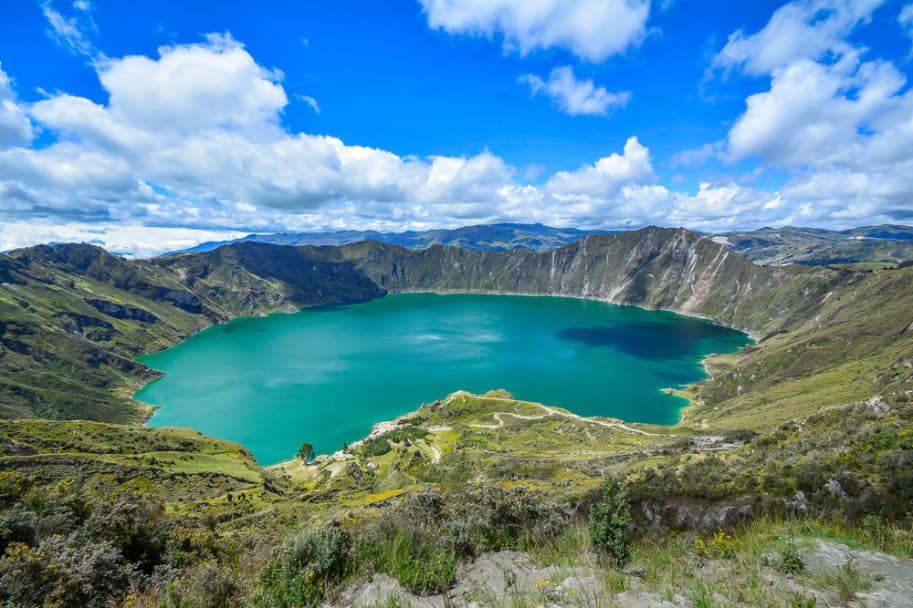
Por mbrand85 / Shutterstock
If mountaineering and ice walking aren’t your thing, Quilotoa will appeal to you more than the other volcanoes on this list. This is because you don’t need to go up on foot – you can get to the top by car, there are many shops, restaurants and other support establishments on the way. And when you arrive, get your camera ready.
From there, you can see a crater 250 meters high and a lake with incredible shades of green and blue, three kilometers in diameter. With so much beauty, it’s easy to forget that you’re in front of a volcano. Each of the viewpoints will give you a different angle, and there are usually queues to take photos at the most beautiful points. Although the wait is worth it (the photos are beautiful), no image does justice to the beauty of the lagoon.
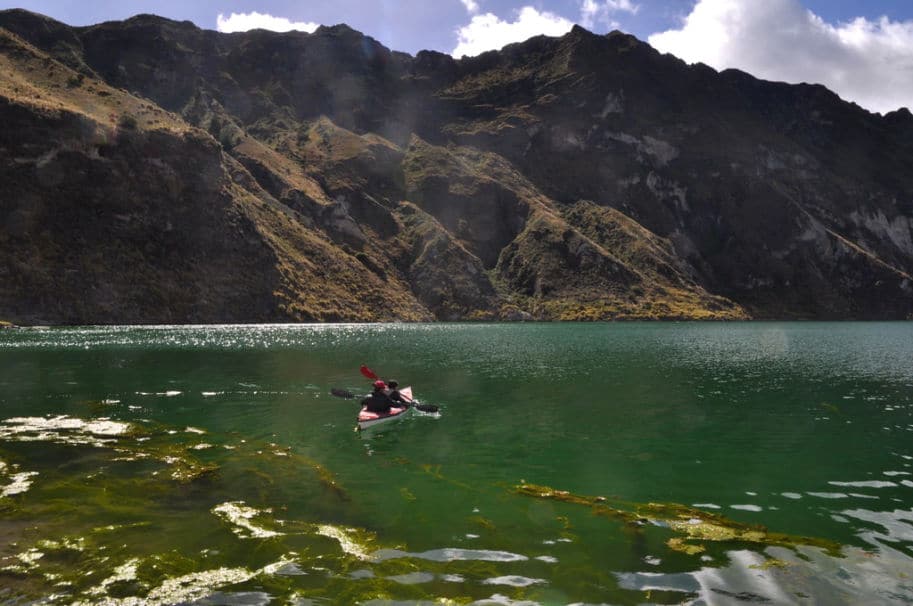
By: Rinaldo Wurglitsch / Flickr
If seeing from afar isn’t enough for you, you can go down to the shore of the lake and even rent some boats to take a ride around it. But swimming is not recommended, because of the concentration of minerals in the water, which are not very good for your health.
You can get to Quilotoa from Latacunga, or even from Quito, with a little patience (it’s about 175 km, and many, many hills and curves along the way).
Honorable mention:
Are you out of time, brother? If you are in Quito, just take the cable car, 6 km from the city center, and you will be at the foot of Pichincha. After an 18-minute journey, you will have access to viewpoints at an altitude of four thousand meters, from where you can see several nearby volcanoes.
Those who are just passing through Quito, or don’t have much affinity with adventures, climbing, hiking or more difficult tours, can have a good impression of the Avenue of Volcanoes in the Ecuadorian Andes. If you’re lucky, the day will be clear and cloudless.
But, if you’re unlucky, the same thing that happened in 2004 could happen: Pichincha will awaken and dump tons and tons of ash over the capital of Ecuador. But Juan, the guide who accompanied me on the trip to Ecuador, guarantees that it is very safe. After all, he told me, “nature is beautiful and unpredictable”.
Sign up for our newsletter

Sign up for our newsletter and stay up to date with exclusive news
that can transform your routine!
Warning: Undefined array key "title" in /home/storelat/public_html/wp-content/plugins/link-whisper-premium/templates/frontend/related-posts.php on line 12
Warning: Undefined array key "title_tag" in /home/storelat/public_html/wp-content/plugins/link-whisper-premium/templates/frontend/related-posts.php on line 13




